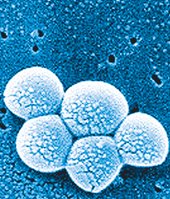In our discussions with infection control professionals, MRSA is a frequent topic. It appears that there is a strongly held belief that MRSA cannot be transmitted via the air. For the doubters, I humbly submit:
- “Staphylococcus aureus, often referred to simply as "staph," is a bacteria commonly found on the skin and in the nose of healthy people” -CDC.
- “Normally, skin cells are replaced every 28 to 30 days”-Cleveland Clinic
 If MRSA is frequently found on your skin, and you completely shed the top layer of your skin once-a-month, isn’t it reasonable that MRSA is hitching a ride on some of those millions of shed skin cells? You know, those skin cells that form cobwebs hanging from your ceiling?
If MRSA is frequently found on your skin, and you completely shed the top layer of your skin once-a-month, isn’t it reasonable that MRSA is hitching a ride on some of those millions of shed skin cells? You know, those skin cells that form cobwebs hanging from your ceiling?
Finally, If we doctors typically test for MRSA using nasal swabs, how did the MRSA get there? Could it be that people inhaled the MRSA through their noses? Air transmission may not be the largest contributor in the spread of MRSA, but it seems likely that it should be considered as one of the links in the chain of transmission.
(MRSA image-University of Texas)
UPDATE: For more information on MRSA's airborne spread, including a list of peer reviewed studies on the topic, please visit this posting from our blog.


1 comment:
Confirmation of the airborne role in MRSA infection can be found at www.envirocair.co.uk where there are at least four articles linked, icluding a recent study from Bath University in UK on the front page and another three at http://www.envirocair.co.uk/faq.htm
Post a Comment